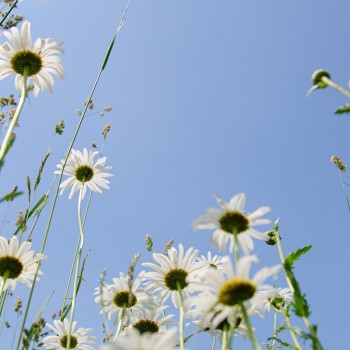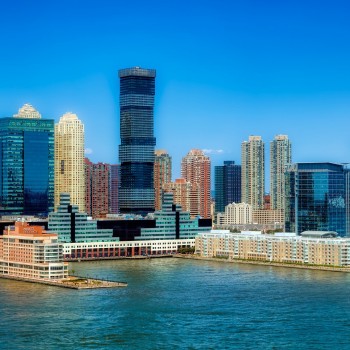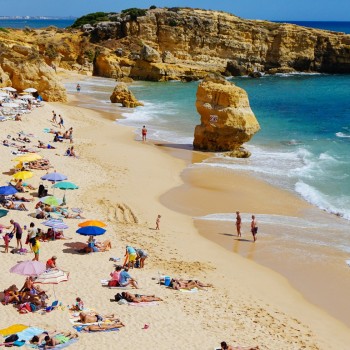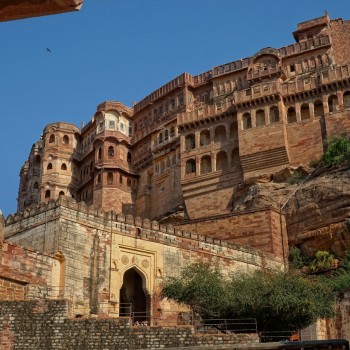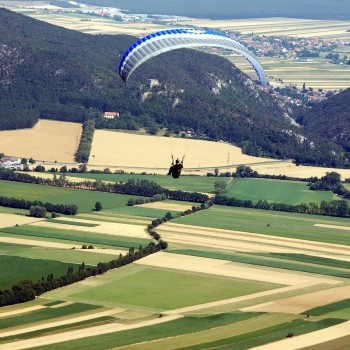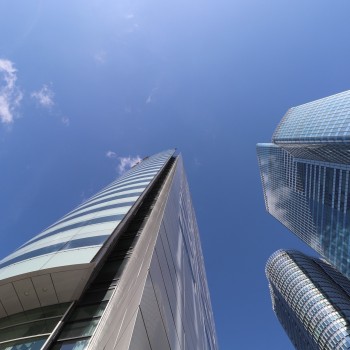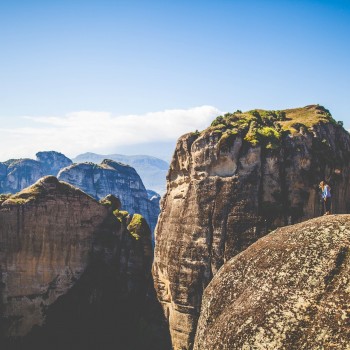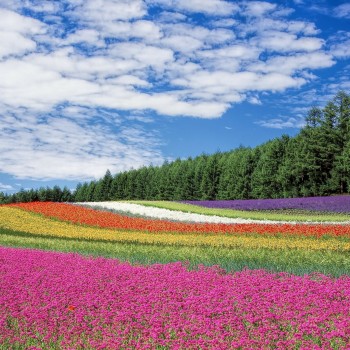Argentina
Argentina
Capital city description
The capital of Argentina is Buenos Aires, located along the southeastern shore of South America, along with the Rio de la Plata. This city has a population size of 3.89 million and a metropolitan population of around 17 million, making it the largest city in the country and the fourth-largest city in the western hemisphere.
This city is known for its high quality of life. Additionally, this capital city is popular with tourists, who take in the multicultural scene and European-influenced architecture.
Climate
- December to February - Summer
- June to August - Winter
- March to May - Autumn
- September to November - Spring
The climate in Argentina is very varied. Argentina has four climates (warm, moderate, arid, and cold), and many micro-climates. Buenos Aires and the Pampas have a temperate climate which means it can be pretty cold in winter but hot and humid in summer. In the deserts of Cuyo, it can be scorching and dry in summer, and temperatures can reach a staggering 50 degrees Celsius (122° Fahrenheit). During winter, it is moderately cold and dry.
The Andes and Patagonia are cool in summer and very cold in winter, varying according to altitude. Extreme temperature shifts within a single day are common here. Take note that seasons in Argentina are reversed from those in the Northern Hemisphere.
Languages spoken
- Spanish is the most spoken language of Argentina.
- Italian ranks second among the languages spoken in Argentina. Estimates indicate that over 1.5 million people speak Italian as their first language.
- Levantine Arabic, which originates from the eastern shore of the Mediterranean, is spoken by approximately 1 million people in Argentina.
Fun/Fascinating Facts
- Argentina was one of the first countries who invented the first radio broadcasting. The country's first broadcast was made in August 1920.
- Argentina produced the world's first animated feature film in 1917. Quirino Cristiani made the first feature-length cartoon in 1917. The 70-minute movie El Apóstol told the story of high levels of corruption and immorality in Argentina at the time.
- The belief that the country held a great wealth of silver deposits resulted in "Argentina."
- Argentina is the second-largest country in Latin America, the eighth-largest country in the world, and the largest Spanish-speaking country globally, with an area of 1,073,500 square miles.
Unique Customs/Traditions
- The culture and customs of Argentina have a strong European influence. When invited to a dinner party, it is a custom that men dress up in a suit and tie, and women in dresses. They should arrive 30 - 45 minutes later; this is normal for the culture. The next day you should follow up with a thank-you call to the host.
- When meeting someone, you must always greet the oldest member or most important member first. A standard handshake, smile, and eye contact are the norm in Argentina. When leaving, say goodbye to each person individually.
- Traditions of Argentina include the National Festival of Folklore, Carnival, Anniversary of the First National Government, Day of the Flag, Day of Friendship, Independence Day, Columbus Day, Snow Festival, and more. With Argentina's Catholic history, they also celebrate holidays such as; Good Friday, Easter, and Christmas.
- The National Festival of Folklore is held in Cordoba as a celebration of folk tradition. Carnival occurs before lent in Argentina. People send cards, flowers, and phone calls to their friends on the Day of Friendship.
- The Snow Festival is for an area in Argentina with a substantial Swiss influence. They celebrate their history with traditional Swiss cake and wine. Argentina celebrates its day of independence on the 9th of July.
Popular universities
| Name | Description | |
|---|---|---|
| Universidad de Buenos Aires | Universidad de Buenos Aires was established in 1882. It is a non-profit public higher education institution located in the urban setting of the metropolis of Buenos Aires (population range of 1,000,000-5,000,000 inhabitants), City of Buenos Aires. Officially recognized by the Ministerio de Educación, Cultura, Ciencia y Tecnología, Argentina (Ministry of Education, Culture, Science and Technology of Argentina), Universidad de Buenos Aires (UBA) is a vast coeducational Argentine higher education institution. Universidad de Buenos Aires (UBA) offers courses and programs leading to officially recognized higher education degrees such as bachelor's degrees in several areas of study. International applicants are eligible to apply for enrollment. UBA also provides several academic and non-academic facilities and services to students, including a library, sports facilities, study abroad and exchange programs, online courses, and distance learning opportunities, as well as administrative services. | |
| Universidad Nacional de La Plata | Universidad Nacional de La Plata (National University of La Plata), a non-profit public higher education institution located in La Plata, was established in 1905 with a population range of 500,000-1,000,000 inhabitants, Buenos Aires. Officially recognized by the Ministerio de Educación, Cultura, Ciencia y Tecnología, Argentina (Ministry of Education, Culture, Science and Technology of Argentina), Universidad Nacional de La Plata (UNLP) is a very large coeducational Argentine higher education institution. Universidad Nacional de La Plata (UNLP) offers courses and programs leading to officially recognized higher education degrees such as bachelor's degrees in several areas of study. International applicants are eligible to apply for enrollment. UNLP also provides several academic and non-academic facilities and services to students, including a library, sports facilities, study abroad and exchange programs, online courses, and distance learning opportunities, as well as administrative services. | |
| Universidad Nacional de Córdoba | Universidad Nacional de Córdoba (National University of Córdoba) is a non-profit public higher education institution located in the urban setting of the metropolis of Córdoba (population range of 1,000,000-5,000,000 inhabitants), Cordoba. It was established in 1613 and officially recognized by the Ministerio de Educación, Cultura, Ciencia y Tecnología, Argentina (Ministry of Education, Culture, Science and Technology of Argentina), Universidad Nacional de Córdoba (UNC) is a very large (uniRank enrollment range: over-45,000 students) coeducational Argentine higher education institution. Universidad Nacional de Córdoba (UNC) offers courses and programs leading to officially recognized higher education degrees in several areas of study. This 407-year-old Argentine higher-education institution has a selective admission policy based on entrance examinations. International applicants are eligible to apply for enrollment. UNC also provides several academic and non-academic facilities and services to students, including a library, sports facilities, financial aids and scholarships, study abroad and exchange programs, online courses and distance learning opportunities, and administrative services. | |
| Universidad Tecnológica Nacional | Universidad Tecnológica Nacional (National Technological University) is a non-profit public higher-education institution located in the urban setting of the metropolis of Buenos Aires (population range of 1,000,000-5,000,000 inhabitants), City of Buenos Aires. This institution was established in 1959, also has branch campuses in the following locations: Avellaneda, Bahía Blanca, Chubut, Concordia, Córdoba, La Plata, La Rioja, Mendoza, Paraná, Rafaela, Reconquista, Resistencia, Río Grande, Rosario, S. Francisco, S. Nicolás, S. Rafael, Santa Cruz, Santa Fe, Tucumán, Venado Tuerto, Villa María. Officially recognized by the Ministerio de Educación, Cultura, Ciencia y Tecnología, Argentina (Ministry of Education, Culture, Science and Technology of Argentina). Universidad Tecnológica Nacional (UTN) offers courses and programs leading to officially recognized higher education degrees such as bachelor's degrees, master's degrees, doctorate degrees in several areas of study. Universidad Tecnológica Nacional institution has a selective admission policy based on entrance examinations. UTN also provides several academic and non-academic facilities and services to students, including a library, sports facilities, study abroad and exchange programs, online courses, and distance learning opportunities, as well as administrative services. | |
| Universidad Nacional de Rosario | Universidad Nacional de Rosario (National University of Rosario) is a non-profit public higher education institution located in the urban setting of the metropolis of Rosario (population range of 1,000,000-5,000,000 inhabitants), Santa Fe. Universidad Nacional de Rosario institution was established in 1968 and had a branch campus in Casilda and Zavalla. Officially recognized by the Ministerio de Educación, Cultura, Ciencia y Tecnología, Argentina (Ministry of Education, Culture, Science and Technology of Argentina), Universidad Nacional de Rosario (UNR) is a huge coeducational Argentine higher education institution. It offers courses and programs leading to officially recognized higher education degrees such as bachelor's degrees in several areas of study. | |
| Universidad Nacional de Cuyo | Universidad Nacional de Cuyo (National University of Cuyo) is a non-profit public higher education institution located in the large city of Mendoza (population range of 500,000-1,000,000 inhabitants). It was founded in 1939 and officially recognized by the Ministerio de Educación, Cultura, Ciencia y Tecnología, Argentina (Ministry of Education, Culture, Science and Technology of Argentina), Universidad Nacional de Cuyo (UNCUYO) is a (uniRank enrollment range: 35,000-39,999 students) coeducational Argentine higher education institution. Universidad Nacional de Cuyo (UNCUYO) offers courses and programs leading to officially recognized higher education degrees such as bachelor's degrees in several areas of study. This 81-year-old Argentine higher-education institution has a selective admission policy based on entrance examinations. UNCUYO also provides several academic and non-academic facilities and services to students, including a library and administrative services. | |
| Universidad de Palermo | Universidad de Palermo (University of Palermo, Argentina) is a non-profit private higher education institution located in the metropolis of Buenos Aires (population range of 1,000,000-5,000,000 inhabitants), City of Buenos Aires. It was established in 1986 and officially recognized by the Ministerio de Educación, Cultura, Ciencia y Tecnología, Argentina (Ministry of Education, Culture, Science and Technology of Argentina), Universidad de Palermo (UP) is a large (uniRank enrollment range: 10,000-14,999 students) coeducational Argentine higher education institution. Universidad de Palermo (UP) offers courses and programs leading to officially recognized higher education degrees such as pre-bachelor degrees (i.e., certificates, diplomas, associate or foundation), bachelor degrees, master degrees, doctorate degrees in several areas of study. See the uniRank degree levels and areas of study matrix below for further details. This 34-year-old Argentine higher-education institution has a selective admission policy based on entrance examinations. International applicants are eligible to apply for enrollment. UP also provides several academic and non-academic facilities and services to students, including a library, sports facilities, study abroad and exchange programs, and administrative services. | |
| Universidad Nacional del Nordeste | Universidad Nacional del Nordeste (Northeast National University) is a non-profit public higher education institution located in the medium city of Corrientes (population range of 250,000-499,999 inhabitants). This institution also has branch campuses in the following locations: Resistencia, Presidencia Roque Sáenz Peña, Curuzú Cuatiá, Paso de los Libres. Officially recognized by the Ministerio de Educación, Cultura, Ciencia y Tecnología, Argentina (Ministry of Education, Culture, Science and Technology of Argentina), Universidad Nacional del Nordeste (UNNE) is a very large coeducational Argentine higher education institution. Universidad Nacional del Nordeste (UNNE) offers courses and programs leading to officially recognized higher education degrees such as bachelor's degrees in several areas of study. This 64-year-old Argentine higher-education institution has a selective admission policy. This higher education institution has an open admission policy. International applicants are eligible to apply for enrollment. UNNE also provides several academic and non-academic facilities and services to students, including a library and administrative services. | |
| Universidad Nacional de Mar del Plata | Universidad Nacional de Mar del Plata (National University of Mar del Plata) is a non-profit public higher education institution located in the urban setting of the large city of Mar del Plata (population range of 500,000-1,000,000 inhabitants), Buenos Aires. This institution also has a branch campus in Balcarce. It was founded in 1975 and officially recognized by the Ministerio de Educación, Cultura, Ciencia y Tecnología, Argentina (Ministry of Education, Culture, Science and Technology of Argentina), Universidad Nacional de Mar del Plata (UNMdP) is a large coeducational Argentine higher education institution. It offers courses and programs leading to officially recognized higher education degrees such as bachelor's degrees, master's degrees, doctorate degrees in several areas of study. This 45-year-old Argentine higher-education institution has a selective admission policy based on entrance examinations. International students are welcome to apply for enrollment. UNMdP also provides several academic and non-academic facilities and services to students, including a library, sports facilities, study abroad and exchange programs, online courses, and distance learning opportunities, as well as administrative services. | |
| Universidad Nacional del Litoral | Universidad Nacional del Litoral (National University of Litoral) is a non-profit public higher education institution located in the urban setting of the large city of Santa Fe (population range of 500,000-1,000,000 inhabitants). Founded in 1919, this institution has branch campuses in the following locations: Esperanza, Reconquista, Gálvez. Officially recognized by the Ministerio de Educación, Cultura, Ciencia y Tecnología, Argentina (Ministry of Education, Culture, Science and Technology of Argentina), Universidad Nacional del Litoral (UNL) is a huge coeducational Argentine higher education institution. Universidad Nacional del Litoral (UNL) offers courses and programs leading to officially recognized higher education degrees such as bachelor's degrees in several areas of study. This 100-year-old Argentine higher-education institution has a selective admission policy. This higher education institution has an open admission policy. International students are welcome to apply for enrollment. UNL also provides several academic and non-academic facilities and services to students, including a library, housing, sports facilities, financial aids and scholarships, study abroad and exchange programs, online courses, and distance learning opportunities, as well as administrative services. | |
Festivals & Events

Folklore National Festival in Cosquín
Date: Between January 22 and 30
Cosquín’s National Folklore Festival began in 1961 and featured some of Argentina’s most illustrious musicians and dancers. The Cosquín Festival is the most important festival in Argentina. The celebration lasts over nine nights in this small city not far from Cordoba. Although this festival takes place during the third week of January, the week leading up to the festival comprises auditions for dancers, musicians, and artists from all over the country and abroad seeking to perform in the festival. The competition is stiff, and the standards are high, making this festival a good time to see some of Argentina’s most esteemed tango artists.

Tango Festival in Buenos Aires
Date: August 10–23
Buenos Aires is the Tango capital city of the world. During the annual Tango Buenos Aires Festival y Mundial (August 10–23, 2017), tango is everywhere. The event attracts the world’s best dancers for an extravagant dance celebration and includes the Tango Mundial (World Cup) dance competition. It also serves as a beautiful introduction to Argentine life and history. The free two-week event is the world’s largest tango festival with 2,000 performers and nearly half a million visitors.

Vendimia en Mendoza
Date: Second weekend of March
Vendimia en Mendoza is a traditional Argentine festival every March in Mendoza, Argentina‘s wine capital. If you’re interested in Argentina Wine Tours, this is the perfect festival for you! People gather to celebrate the grapes transforming into exquisite wine after an extended harvest. This celebration started in 1936 and has grown to a large set of shows, concerts, and gatherings throughout the week.

Carnaval de Gualeguaychú
Date: January, February, and the first week of March
January, February, and the first week of March are dedicated to carnival time in Gualeguaychú.
Carnaval de Gualeguaychú is Argentina's most spectacular summer carnival, appreciated in an imposing setting where tens of thousands of people party in front of the passing carnival dancers.
The Gualeguaychú carnival is considered one of the best in the world, with those of Rio de Janeiro and Venice and its hierarchy. It has earned recognition in Argentina's media and that of various countries worldwide. There are hundreds of characters in the parade, many impressive floats, and great creativity and talent involved in making the costumes. It is possible to see more than 70 thousand feathers and costumes adorned with over 500,000 sequins and pearls throughout the carnival.
The grand show takes place in Argentina's first 'corsódromo' (arena), opened in 1997; the second in South America with a seating capacity for 40,000 people. There are stands, chairs, and a VIP area. The intense rhythm of Brazil was born out of the street musicians of Uruguay, reminiscent of the feathers of 'Corrientes.' Organized by sports and social clubs, it is the blood of Gualeguaychú that creates this fantastic, unique show, giving it its distinctive stamp.
The carnival signifies the most important social, cultural, and economic event in Gualeguaychú's calendar. Every summer, it is a touristic phenomenon, bringing in a wealth of foreign currency, equalling the annual municipal budget. The event has thousands of participants, both on and off the scene.

Carnival in Buenos Aires
Date: Every weekend of February
Carnaval de Buenos Aires or Corso de Buenos Aires is an annual event during the Carnival festivities, usually at the end of February, in Buenos Aires, Argentina. The two-day event features murga parades, colorful costumes, water bombs, and many other amusement activities.

Oktoberfest Beer Festival in Córdoba
Date: October
The original Oktoberfest takes place in Munich, Germany, but German immigrants living in Cordoba decided decades ago to start their version of it. Argentina’s version of Oktoberfest takes place over October’s long weekend (typically around the 12th) in the German-founded city of Villa General Belgrano, a beautiful setting between Cordoba’s sierras chicas (hills). The city’s huge beer garden works as the main venue, where beer brewers from all over the country gather to sell their best products, as well as traditional German food.

Festival Nacional de Doma y Folklore (Jesus Maria Festival)
Date: First weekend of January
Jesús María festival is an event of folkloric music and horsemanship. You will experience Argentine folk music and watch gauchos, the Argentinian cowboys who perform their skills on horseback. It is the most important event in Argentina, featuring folklore music and horsemanship skills.
Prestigious musical shows, horse riding contests, and many visitors come together for ten days in January, ten wonderful nights of color and courage. Also, an endless number of outdoor activities and the kindness of the inhabitants of Jesús María await tourists to grant them unforgettable cultural moments.

Septiembre Musical
Date: Between September 3 and 30
Septiembre Musical is an annual international arts festival that takes place in the province of Tucumán, Argentina. This annual arts festival was originally dedicated to academic musical symphonies, chamber music, and classical music. The festival was created in a local context of strong cultural tradition marked by the founding in 1911 of the Academy of Fine Arts, a pioneer in the country, and by the creation in 1948 of the Orchestra of National University Tucumán (UNT).
Over the years, the event has added various other disciplines, including blues, jazz, opera, pop-rock, tango, and recitals of local folklore. Attend this festival to get a taste of true Argentinian heritage.
Attractions / Top Sights

Iguazú Falls
When to visit: The best time to visit the Iguazu Falls is from April to May and from September to October.
The beautiful Iguazú Falls lie along Argentina's border with Brazil, with Iguazu National Park on the Argentinian side and Iguaçu National Park on the Brazilian side. Protected as a UNESCO World Heritage Site, these huge waterfalls are undoubtedly one of the most spectacular sights in South America.
The falls divide the river into the upper and lower Iguazu. Below its confluence with the San Antonio River, the Iguazu River forms the border between Argentina and Brazil.
Iguazu comprises between 150 to 300 individual falls along its nearly three-kilometer edge, a number that changes depending on the season, varying in height between 60 to 82 meters.

The Perito Moreno Glacier
The Perito Moreno Glacier is one of the largest in Patagonia at 30 kilometers long, located in the Los Glaciares National Park in southwest Santa Cruz Province, Argentina. It is one of the most important tourist attractions in Argentinian Patagonia.
Perito Moreno Glacier is perhaps the region’s most famous glacier because it periodically cuts off the central southern arm (known as Brazo Rico) of Lake Argentino. The glacier advances right across the lake until it meets the opposite shoreline, and the ice tongue is “grounded” (not floating) so that it forms a natural dam. The ice dam prevents lake water from circulating from one side to the other, which in turn causes muddier and “milkier” water to concentrate in Brazo Rico. Water flows down under the glacier from the mountains, carrying the mud into the lake and helping lubricate the glacier’s downhill movement.
Because of this natural ice dam, meltwater from the south raises water levels in Brazo Rico by as much as 30 meters above the water level in Lago Argentino. The tremendous pressure ultimately causes the ice tongue to rupture catastrophically in a great natural spectacle. The last rupture occurred in March 2012, after this image was taken. The process repeats every four to five years as the glacier grows back towards the opposite shoreline. The repeated ruptures have made the glacier and lake a significant tourist attraction in the region.

Tierra del Fuego National Park
When to visit: The best time to visit Tierra del Fuego is when it is summer in the southern hemisphere—October to April
Tierra del Fuego National Park is located in southern Argentina on the island of Tierra del Fuego. It is the southernmost national park in Argentina, and it encompasses an area of 243 square miles (630 sq km).
The park has dramatic scenery, with waterfalls, forests, mountains, and glaciers. Its 630 km2 (240 sq mi) includes parts of the Fagnano and Roca lakes. The Senda Costera (Coastal Path), connecting Ensenada Bay to Lapataia Bay on Lago Roca, is a popular hiking trail within the park Forests of Antarctic beech, Lenga beech, and Coihue in the lower elevations of the park are home to many animal species. There are 20 species of terrestrial mammals, including the guanaco, Andean fox, North American beaver, the European rabbit, and muskrat. Among the 90 species are the kelp goose, torrent duck, austral parakeet, Andean condor, blackish oystercatcher, and Magellanic oystercatcher.

Puerto Madryn and the Valdés Peninsula
Puerto Madryn lies just outside of the Península Valdés and is the largest town in the area.
Founded by Welsh settlers in 1886, the city's deep-water port and abundant nature reserves make it one of Argentina's most popular cruise destinations.
Its rugged coastline attracts water sports enthusiasts, particularly windsurfers who enjoy defying the Patagonian solid winds.
Peninsula Valdes is one of South America's finest nature reserves to spot sea lions, elephant seals, Southern right whales, and more. The gateway to this nature lover's paradise is Puerto Madryn, a coastal city located about an hour's drive from the peninsula.

Ushuaia
When to visit: November through to March will be the best time to visit Ushuaia.
Ushuaia is located in a wide bay on the southern coast of Isla Grande de Tierra del Fuego, bounded on the north by the Martial mountain range and on the south by the Beagle Channel. It is the only municipality in the Department of Ushuaia, which has an area of 9,390 km 2 (3,625 sq mi).
Established as a penal colony in the early 20th century and is now a popular jumping-off point for trips to Antarctica or around Cape Horn. This town on Beagle Channel is surrounded by a unique landscape of mountains, sea, glaciers, and woods on the edge of the Tierra del Fuego National Park, with its spectacular scenery and diverse flora and fauna.
Popular places include the San Juan de Salvamento Lighthouse - also known as the End of the World Lighthouse, built in 1884 on the Isla de Los Estados and the End of the World Museum.
The Maritime Museum of Ushuaia is housed in the town's notorious former military prison. It is worth visiting for its many maritime artifacts and scale models of famous ships like Darwin's Beagle.

Mendoza
When to visit: The best times to visit Mendoza for ideal weather are. February 26th to May 6th and September 24th to December 9th.
Mendoza is one of Argentina's most beautiful cities, filled with Art Deco architecture, is as popular with outdoor enthusiasts in winter as it is in summer. When the snow flies, skiers from across South America experience some of the Andes' best ski slopes at the popular resorts of Las Leñas, renowned for its steep terrain, and Los Penitentes, just 25 kilometers from the border with Chile.
These same areas are popular among hikers and climbers in the summer, many aiming for the top of the 6,960-meter-tall Aconcagua mountain. Other outdoor activities include whitewater rafting and trail riding, with some riding stables offering overnight adventures with camping under the stars.
Famous for its olive oil production, Mendoza has many other attractions, including several museums and annual festivals and a bustling Central Market (Mercado Central) where locals buy produce, meat, and fish and where visitors can find food stalls and restaurants.

Cathedral of Córdoba
When to visit: March is the best time to visit the Cathedral of Cordova
The Cathedral of Córdoba (Our Lady of the Assumption; Spanish: Nuestra Señora de la Asunción) is the central church of the Roman Catholic Archdiocese of Córdoba, Argentina, and the oldest church in continuous service in Argentina.
The Cathedral of Córdoba, a splendid mix of Baroque and Neoclassical styles, was built in 1580, with highlights of the structures from the 18th century, including an ornate interior with exquisite 20th-century frescoes and murals painted by leading Argentinian artist Emilio Caraffa, a native of Córdoba.

Monte Fitz Roy
When to visit: November to March
Monte Fitz Roy, located in the south Argentine region of Patagonia, is a magnificent mountain with some peculiar-shaped icy peaks. It sits in the ice fiends south of the Andres, right in the borderline between Chile and Argentina. Discovered in 1877, it was named after Robert Fitz Roy, a famous explorer who explored the southern regions of Argentina. Along with many Southern Patagonian Ice Field areas, this landmark is a popular destination for mountain climbers and explorers.

Mount Aconcagua
When to visit: Best time to visit is Aconcagua is from November 15th through to March 31st of every year
Mt. Aconcagua, the highest mountain in both the Western and Southern Hemispheres, the tallest peak on Earth outside of Asia, and the second of the Seven Summits, after Mt. Everest and located in western Argentina, near the Chile border.
Mountaineers from across the globe come to climb Aconcagua, South America’s highest peak at more than 22,800 feet tall.

La Boca
The La Boca Neighborhood in the Argentine capital of Buenos Aires is often known as a Europe in South America. An area that thrived during the Italian ruling, La Boca has quite a history as it has been the place for many rebellions and revolutions.
La Boca is a popular destination for tourists visiting Argentina; with its colorful houses and pedestrian street, the Caminito, where tango artists perform and tango-related memorabilia is sold.
It is the home of the renowned football club of Boca Juniors; the entire city is a very charming playground as people are often seen playing football in the streets.



